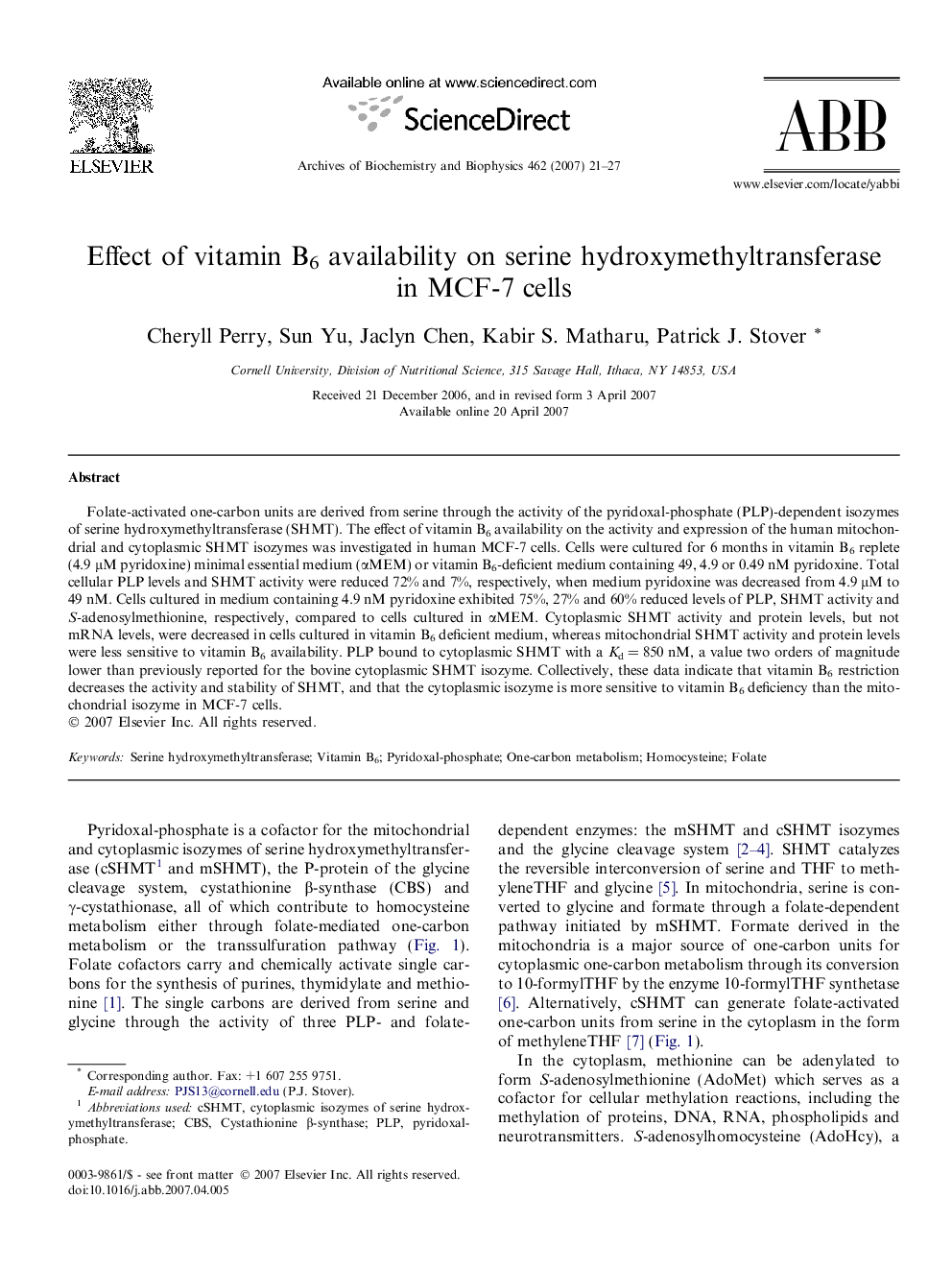| Article ID | Journal | Published Year | Pages | File Type |
|---|---|---|---|---|
| 1927093 | Archives of Biochemistry and Biophysics | 2007 | 7 Pages |
Folate-activated one-carbon units are derived from serine through the activity of the pyridoxal-phosphate (PLP)-dependent isozymes of serine hydroxymethyltransferase (SHMT). The effect of vitamin B6 availability on the activity and expression of the human mitochondrial and cytoplasmic SHMT isozymes was investigated in human MCF-7 cells. Cells were cultured for 6 months in vitamin B6 replete (4.9 μM pyridoxine) minimal essential medium (αMEM) or vitamin B6-deficient medium containing 49, 4.9 or 0.49 nM pyridoxine. Total cellular PLP levels and SHMT activity were reduced 72% and 7%, respectively, when medium pyridoxine was decreased from 4.9 μM to 49 nM. Cells cultured in medium containing 4.9 nM pyridoxine exhibited 75%, 27% and 60% reduced levels of PLP, SHMT activity and S-adenosylmethionine, respectively, compared to cells cultured in αMEM. Cytoplasmic SHMT activity and protein levels, but not mRNA levels, were decreased in cells cultured in vitamin B6 deficient medium, whereas mitochondrial SHMT activity and protein levels were less sensitive to vitamin B6 availability. PLP bound to cytoplasmic SHMT with a Kd = 850 nM, a value two orders of magnitude lower than previously reported for the bovine cytoplasmic SHMT isozyme. Collectively, these data indicate that vitamin B6 restriction decreases the activity and stability of SHMT, and that the cytoplasmic isozyme is more sensitive to vitamin B6 deficiency than the mitochondrial isozyme in MCF-7 cells.
